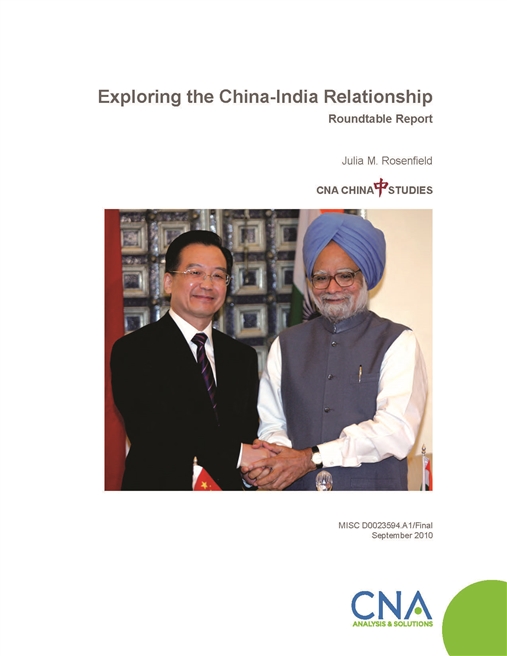With the 60th anniversary of the establishment of formal diplomatic ties between the People’s Republic of China and the Republic of India taking place in the spring of 2010, the time was right to further explore the China-India relationship. On July 29, 2010, CNA China Studies hosted a half-day roundtable to discuss this important topic. Participants, who included analysts from various think-tanks in Washington, DC, were asked to address the following issues:
- India’s perspective on the China-India relationship
- China’s perspective on the China-India relationship
- Water issues and the China-India relationship.
This CNA report is based primarily on the presentations, findings, and discussions at the CNA roundtable. It does not represent a fully coordinated consensus of the roundtable participants.
Key Themes
Despite generally improving relations in recent years, China and India face challenges—such as the ongoing border dispute, the tensions over economic and foreign policy issues, and the Tibet question—that place limits on how close they can become. China and India will likely continue to partner with one another on a pragmatic basis on issues of mutual interest; however, no broad consensus exists between the two countries.
Likewise, on economic issues, China and India are likely to continue to cooperate where it is mutually beneficial, but trade-related frictions will continue to hamper the relationship. In recent years, China and India have grown their annual trade volume to more than $60 billion. Both countries have benefitted from this trade. However, a variety of challenges, including India’s use of trade remedies, India’s failure to declare China a market economy, and China’s relentless focus on the purchase of raw materials, will put a strain on the China-India economic relationship.
As both China and India expand their interests, activities, and presence in South and East Asia, they increasingly find themselves operating in one another’s perceived zones of interest, increasing the possibility of competition and conflict. China is concerned about India’s increasing efforts to establish closer military ties with neighboring ASEAN countries and about the level of India’s naval activity in the Indian Ocean, which it perceives as a possible challenge to China’s sea lane access. India, on the other hand, sees China’s increasing interest and activities in the Indian Ocean and its growing relationships with India’s neighboring states, such as Burma, as encroaching on its home territory.
While India remains concerned about Pakistan in the near term, it is increasingly focused on the challenge of China. As India re-conceptualizes its military doctrine, procures defense materiel, and frames its larger security strategy, China looms large. This evolutionary shift is due in part to a changing security environment, but also to India’s desire to join greater strategic alliances that will position it as a more important international player.
In the realm of non-traditional security, water issues will present challenges for China and India, both domestically and in their bilateral relationship. India and China are the world’s first and second largest consumers of fresh water, respectively. Each has made great strides in terms of development of water for drinking, sanitation, agriculture, and energy generation. The further development of hydropower presents the potential for internal challenges in both countries, due to unrest over population displacement and the environmental impact of major energy projects. In areas where China and India rely on the same rivers to generate electricity, questions over water management and usage rights could lead to friction. Climate change, which will eventually result in reduced water availability, is expected to exacerbate these issues.
Download reportUnlimited distribution.
Details
- Pages: 22
- Document Number: MISC D0023594.A1/Final
- Publication Date: 9/1/2010
